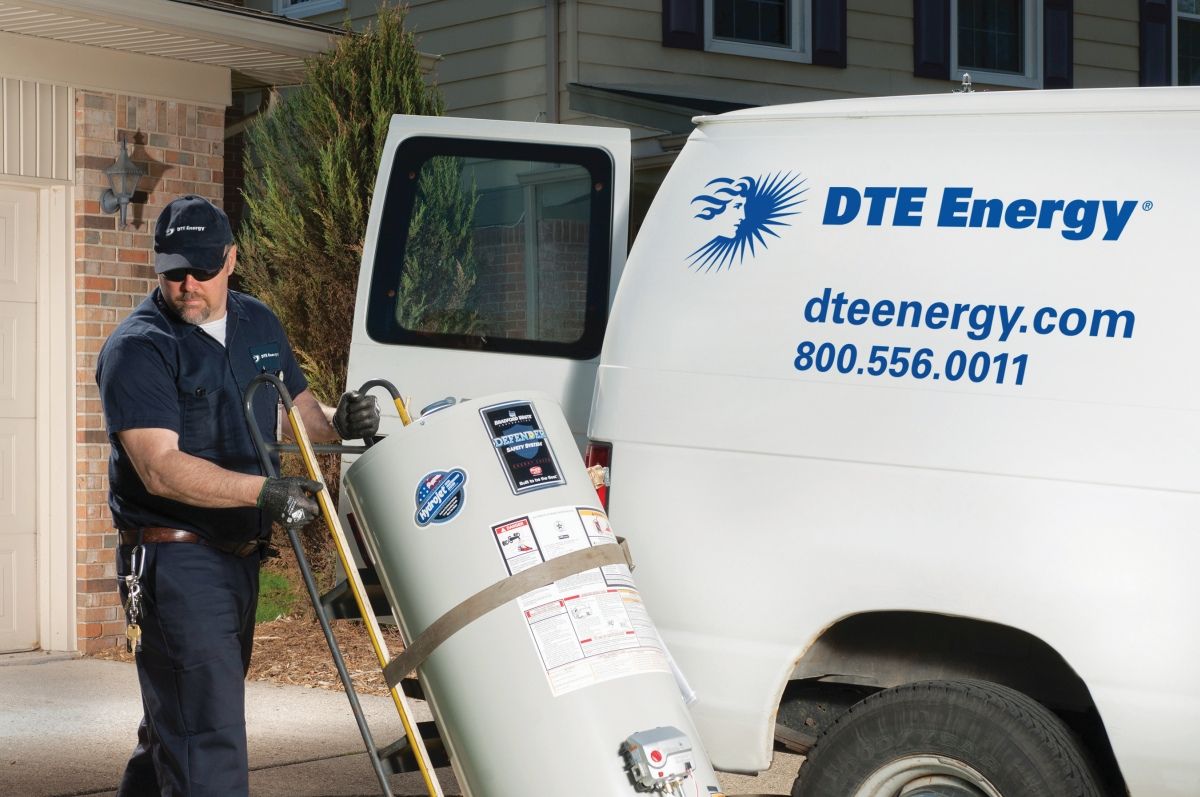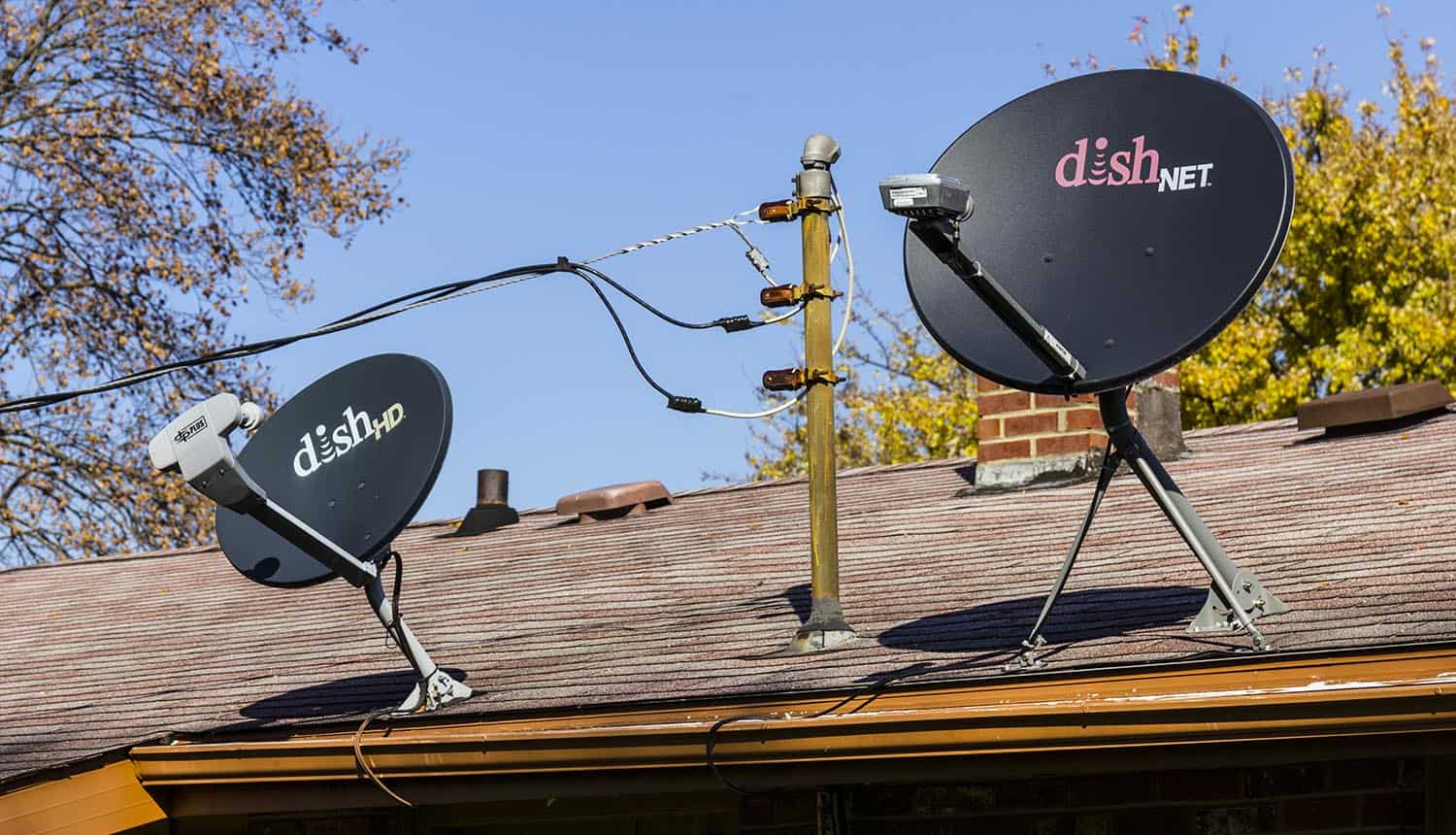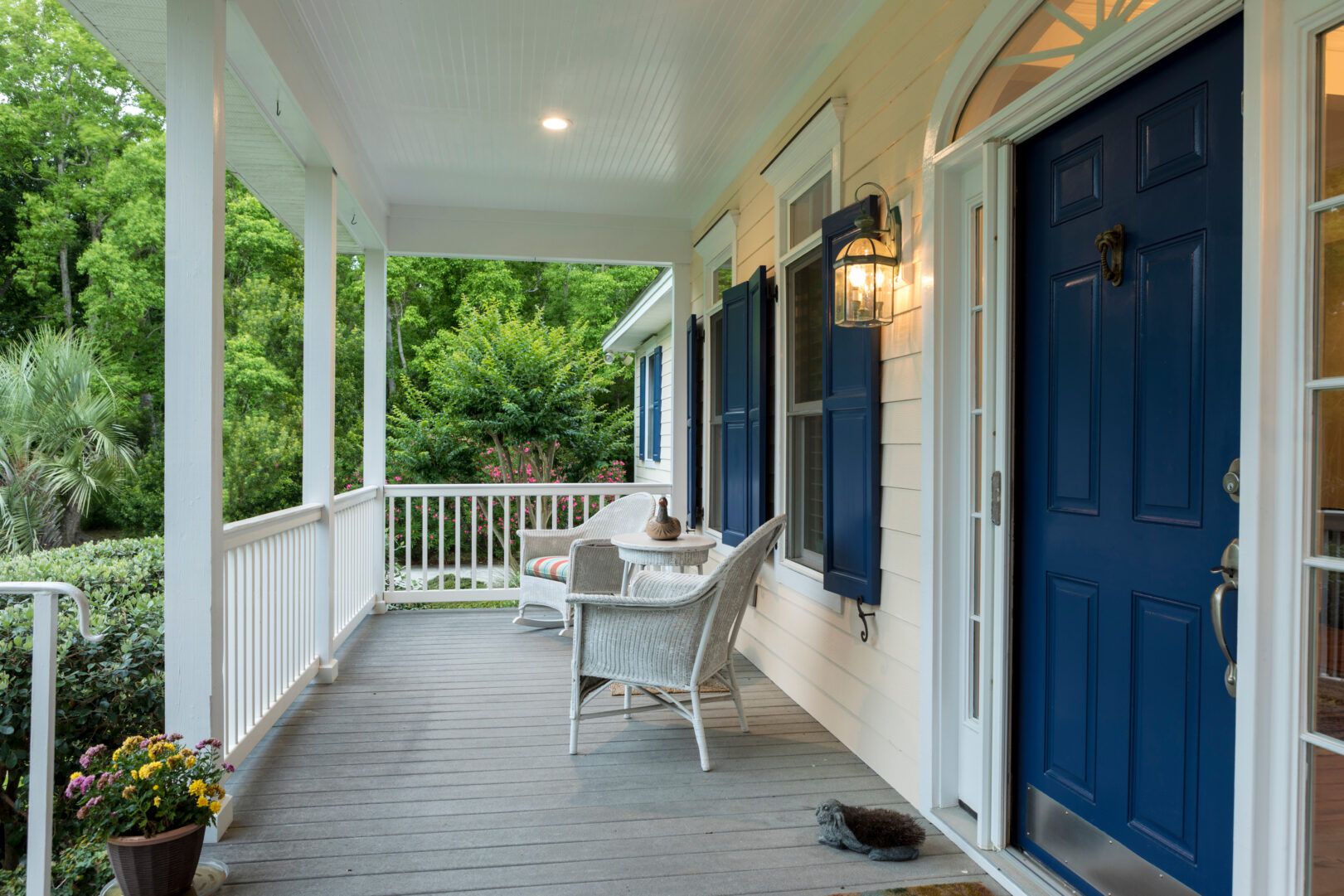Home>Home Security and Surveillance>What Are Insurance Home Protection Plans


Home Security and Surveillance
What Are Insurance Home Protection Plans
Modified: March 6, 2024
Learn about insurance home protection plans and how they can help safeguard your home and belongings. Discover the benefits of home security and surveillance for added peace of mind.
(Many of the links in this article redirect to a specific reviewed product. Your purchase of these products through affiliate links helps to generate commission for Storables.com, at no extra cost. Learn more)
Introduction
Welcome to the world of home security and surveillance! As concerns about the safety of our homes and loved ones continue to grow, it’s becoming increasingly important to invest in reliable and effective home protection measures. One such measure is the use of home protection plans, which offer a comprehensive and holistic approach to keeping your home secure.
A home protection plan is a valuable insurance product that provides coverage for a range of risks that your home may face. These risks can include burglaries, fires, natural disasters, and even accidents that occur on your property. By enrolling in a home protection plan, you can gain peace of mind knowing that you have financial protection in case of unfortunate events.
Home protection plans typically offer coverage for both the structure of your home and the personal belongings within it. This means that not only will you be financially protected against damage or loss to the physical structure of your property, but you will also have coverage for the valuable items that make your house a home.
One of the key benefits of home protection plans is the flexibility they offer. You can tailor your coverage to meet your specific needs and budget. Whether you live in a standalone house, a condominium, or an apartment, there are home protection plans available to suit your circumstances.
Another advantage of home protection plans is the peace of mind they provide. Knowing that you have a comprehensive insurance policy in place can alleviate stress and anxiety, allowing you to enjoy your home without constant worry. You can rest assured that you have financial protection in the event of an unexpected incident.
However, it’s important to note that home protection plans are not without their drawbacks. Monthly premiums can add to your expenses, and some plans may have limitations or exclusions that you need to be aware of. It’s crucial to carefully read and understand the terms and conditions of any home protection plan before making a decision.
In this comprehensive guide, we will explore the different coverage types, benefits, and drawbacks of home protection plans. We will also provide tips on how to choose the right plan for your specific needs and budget. So, let’s dive in and discover how home protection plans can help you safeguard your most valuable asset: your home.
Key Takeaways:
- Home protection plans offer financial coverage for unexpected repairs or replacements of major home systems and appliances, providing peace of mind and convenience for homeowners.
- It’s important to carefully review the costs, coverage limitations, and provider reputations when choosing a home protection plan to ensure it aligns with your specific needs and budget.
Read more: What Is A Home Protection Plan
What is a Home Protection Plan?
A home protection plan, also known as a home warranty, is an insurance product that provides coverage for various risks associated with owning a home. It offers financial protection against unexpected repair or replacement costs for major systems and appliances in your home.
When you purchase a home protection plan, you enter into a contract with a provider who agrees to cover the repair or replacement of certain components of your home. These components can include major systems such as HVAC (heating, ventilation, and air conditioning), plumbing, and electrical systems, as well as household appliances like refrigerators, dishwashers, and washing machines.
Home protection plans typically operate on an annual basis, with the option to renew the coverage each year. They offer a level of control and convenience, allowing you to easily manage and budget for potential repair or replacement costs.
It’s important to note that a home protection plan is different from homeowners insurance. While homeowners insurance covers damages and losses caused by unforeseen events like fires, storms, or break-ins, a home protection plan specifically focuses on providing coverage for the wear and tear of everyday use and inevitable breakdowns of home systems and appliances.
So, how does a home protection plan work? When a covered system or appliance in your home malfunctions or breaks down, you simply contact your home protection plan provider to file a claim. They will then send a qualified technician or contractor to assess and repair or replace the faulty component.
Home protection plans often require a service fee or deductible to be paid when a claim is filed. This fee is typically lower than the full cost of the repair or replacement, making it a cost-effective solution for homeowners.
It’s important to understand the coverage limitations of your home protection plan. Pre-existing conditions, pre-determined maximum coverage amounts, and specific exclusions may apply. Carefully review the terms and conditions of your plan to ensure you have a clear understanding of what is covered and what is not.
In summary, a home protection plan offers homeowners financial protection against unexpected repair or replacement costs for major systems and appliances. It provides peace of mind and convenience by taking care of the repair or replacement process, saving you time, effort, and potentially substantial expenses.
Coverage Types
Home protection plans offer various coverage types to cater to the specific needs and budget of homeowners. While the exact coverage options can vary between providers, here are some common coverage types you may come across:
- Basic Systems Coverage: This type of coverage typically includes major systems in your home, such as electrical, plumbing, heating, and air conditioning systems. It provides protection against breakdowns and malfunctions due to normal wear and tear.
- Appliance Coverage: This coverage focuses on protecting household appliances like refrigerators, dishwashers, ovens, and washing machines. It helps cover the repair or replacement costs if these appliances experience failures or breakdowns.
- Roof Coverage: Some home protection plans offer coverage for repairs or replacement of your roof due to potential leaks, damage from storms, or natural wear and tear over time.
- Exterior Coverage: This coverage extends to exterior components of your home, such as siding, fences, and garage doors. It helps cover repair costs in case of damage or wear and tear.
- Pool and Spa Coverage: If you have a swimming pool, hot tub, or spa, you may opt for additional coverage to protect these components from potential mechanical failures and damages.
- Additional Options: Depending on your provider, you may also have the option to add coverage for other items, such as well pumps, septic systems, and even certain home electronics.
It’s important to carefully review the coverage options offered by each home protection plan provider. Assess your specific needs and consider the age and condition of your home systems and appliances. This will help you determine the most appropriate coverage types to include in your plan.
Keep in mind that coverage limitations and exclusions may apply. Some plans may have waiting periods before coverage takes effect. Additionally, pre-existing conditions or known issues may not be covered under the plan. It’s crucial to review the terms and conditions of each plan to ensure you have a clear understanding of what is included and what is not.
By selecting the right coverage types for your home protection plan, you can have peace of mind knowing that you are financially protected against unexpected repair or replacement costs for various components of your home.
Benefits of Home Protection Plans
Home protection plans offer a range of benefits that can provide homeowners with peace of mind and financial protection. Here are some key advantages of having a home protection plan:
- Financial Protection: One of the primary benefits of a home protection plan is the financial safeguard it provides. When covered systems or appliances in your home malfunction or break down, the plan will cover the repair or replacement costs, saving you from potentially expensive out-of-pocket expenses.
- Convenience: Dealing with unexpected repairs can be a hassle, especially when it involves finding reliable technicians and managing the repair process. With a home protection plan, you have the convenience of a single point of contact. Simply file a claim with your provider, and they will arrange for a qualified technician to assess and repair the issue, reducing the stress and inconvenience for you.
- Broad Coverage: Home protection plans typically cover a wide range of systems and appliances in your home, depending on the specific plan and coverage types selected. This comprehensive coverage ensures that you are protected against major repair or replacement costs for vital components of your home, providing peace of mind and security.
- Budget-Friendly: Opting for a home protection plan can help you manage your budget more effectively. Instead of facing unexpected and potentially significant expenses for repairs or replacements, you pay a predictable monthly or annual premium. This helps you spread out the cost of home maintenance and repairs, making it easier to plan and budget for these expenses.
- Potential Real Estate Advantage: If you plan to sell your home in the future, having a home protection plan in place can be an attractive feature for potential buyers. It provides reassurance that the major systems and appliances in the home are covered, giving them peace of mind and potentially increasing the value and marketability of your property.
- Peace of Mind: Knowing that you have a home protection plan in place brings peace of mind. You can rest assured that if unexpected breakdowns or malfunctions occur, you won’t have to worry about the financial burden of repairs or replacements. Instead, you can focus on enjoying your home and spending time with your loved ones.
It’s important to note that each home protection plan may have its own unique set of benefits and features. When selecting a plan, consider the level of coverage, reputation of the provider, and customer reviews. This will help ensure that you choose a plan that best suits your needs and provides the maximum benefits and value.
By having a home protection plan in place, you can enjoy the peace of mind that comes from knowing your home and its essential systems and appliances are covered, allowing you to focus on making beautiful memories in your safe and protected sanctuary.
Drawbacks of Home Protection Plans
While home protection plans offer valuable coverage and peace of mind, it is important to also consider their drawbacks. Here are some common disadvantages associated with home protection plans:
- Premium Costs: One of the main drawbacks of home protection plans is the cost. Homeowners are required to pay a monthly or annual premium to maintain coverage. These premiums can add up over time and may increase as the value of your home or the number of covered systems and appliances increase. It’s essential to factor these costs into your budget and evaluate whether the benefits outweigh the premiums.
- Limitations and Exclusions: Home protection plans often come with limitations and exclusions. Certain components or breakdowns may not be covered under the plan. Pre-existing conditions or known issues may also be excluded. It’s crucial to thoroughly read the terms and conditions of the plan to understand what is and isn’t covered. This can be time-consuming and may lead to disappointments if a claim is denied due to an excluded item or condition.
- Service Fees and Deductibles: When you file a claim with a home protection plan, you may be required to pay a service fee or deductible. This fee is usually lower than the full cost of the repair or replacement, but it still adds an additional out-of-pocket expense. It’s important to consider these fees and deductibles when assessing the overall cost-effectiveness of the plan.
- Contract Terms and Commitment: Home protection plans often come with contractual agreements and terms that can be binding for a specified period of time. This means you may be locked into the plan and its associated costs for a determined period, which can be restrictive if you want to switch providers or cancel the plan before the contract expires.
- Provider Reputation: It’s crucial to research and choose a reputable home protection plan provider. Unfortunately, there are some providers in the market that may not deliver on their promises or provide adequate customer service. Reading reviews, checking the provider’s history, and assessing their reputation in the industry can help you avoid potential issues and frustrations.
- Overlap with Existing Coverage: Before purchasing a home protection plan, it’s important to review your existing homeowners insurance policy. Some components covered by home protection plans may already be covered under your insurance policy. In such cases, paying for additional coverage may not be necessary, leading to additional costs without significant benefits.
Understanding and considering these drawbacks can help you make an informed decision about whether a home protection plan is right for you. It’s crucial to carefully evaluate the costs, coverage limitations, and commitments associated with the plan, and ensure that the benefits outweigh the disadvantages.
By being aware of the potential drawbacks, you can make a well-informed decision and choose the home protection plan that best suits your needs and circumstances.
When considering home protection plans, be sure to carefully review the coverage options and exclusions to ensure you have the right level of protection for your home and belongings.
Read more: What Is An ERA Home Protection Plan
How to Choose the Right Home Protection Plan
Choosing the right home protection plan is essential to ensure that you have the necessary coverage and peace of mind. Here are some key factors to consider when selecting a home protection plan:
- Coverage Needs: Assess your specific coverage needs. Consider the age and condition of your home systems and appliances. Evaluate which components are most likely to experience issues and prioritize coverage accordingly. This will help you determine the level of coverage and the specific systems and appliances you want to include in your plan.
- Reputation and Experience: Research the reputation and experience of home protection plan providers. Look for providers that have a proven track record of delivering reliable service and honoring claims. Read customer reviews, check ratings from reputable sources, and ask for recommendations from friends or family who have experience with home protection plans.
- Price and Affordability: Consider the cost of the home protection plan. Evaluate the monthly or annual premiums and compare them with the level of coverage offered. Determine if the cost aligns with your budget and whether the benefits outweigh the expenses. Keep in mind that while lower premiums may be appealing, they may also come with limitations or higher deductibles. Strike a balance between affordability and comprehensive coverage.
- Contract Terms and Flexibility: Read the contract terms and conditions carefully. Understand the length of the contract, termination policies, and any penalties associated with cancellation. Make sure the plan offers the flexibility you desire in terms of customization, upgrades, and the ability to adjust coverage based on your changing needs.
- Customer Service and Support: Assess the quality of customer service and support provided by the home protection plan provider. Prompt and reliable customer service is crucial when you need assistance with claims or have questions regarding your coverage. Look for providers that offer 24/7 customer support and have a reputation for being responsive and helpful.
- Exclusions and Limitations: Carefully review the exclusions and limitations of each home protection plan. Understand what components or circumstances are not covered and ensure that there are no surprises when you need to file a claim. Clear communication and transparency in the terms and conditions will help you make an informed decision.
- Compare Multiple Options: Don’t settle for the first home protection plan you come across. Take the time to compare multiple options from different providers. Assess their coverage, costs, customer reviews, and any additional features or benefits they may offer. This will help you make a more informed decision and select the plan that best meets your specific needs and preferences.
By considering these factors, you can choose a home protection plan that provides the right level of coverage, suits your budget, and offers reliable service and support. Remember, selecting the right plan requires careful evaluation and consideration of your unique circumstances and preferences.
Take the time to research and compare options, ask questions, and seek recommendations to ensure that you choose the best home protection plan for your home and peace of mind.
Comparing Home Protection Plans
When it comes to choosing a home protection plan, it’s essential to compare different options to ensure you select the one that best suits your needs. Here are some key factors to consider when comparing home protection plans:
- Coverage: Evaluate the coverage provided by each plan. Assess which systems and appliances are covered and compare the level of protection offered. Look for plans that align with your specific needs and provide comprehensive coverage for the components that are most important to you.
- Cost: Compare the costs associated with each home protection plan. Assess the monthly or annual premiums and any additional fees or deductibles. Consider your budget and evaluate the cost-effectiveness of each plan based on the level of coverage provided. Remember to weigh the cost against the benefits and potential savings in repair or replacement expenses.
- Contract Length and Terms: Review the contract length and terms of each plan. Understand the commitment you are making and any penalties or fees associated with canceling or modifying the plan. Look for flexibility in contract terms that allow you to adjust coverage or cancel the plan if needed.
- Provider Reputation: Research the reputation of the home protection plan providers. Look for providers with a solid track record of reliability, fast and efficient claim processing, and excellent customer service. Check online reviews, ratings from reputable sources, and ask for recommendations from others who have experience with home protection plans.
- Customer Support: Evaluate the customer support provided by each plan. Consider the availability of customer service, the ease of filing and tracking claims, and the responsiveness of the support team. Good customer support is crucial in ensuring a smooth experience when you need to utilize your coverage.
- Exclusions and Limitations: Carefully read and compare the exclusions and limitations of each plan. Understand what is not covered and any specific conditions or requirements that may apply. Identifying potential gaps in coverage will help you make an informed decision and avoid surprises when filing a claim.
- Additional Benefits or Features: Some home protection plans may offer additional benefits or features that differentiate them from others. These could include priority service, emergency assistance, or discounts on repairs or replacements. Assess if these additional features align with your needs and if they provide added value to the plan.
By comparing these factors, you can narrow down your options and select the home protection plan that offers the best coverage, affordability, reputation, and overall value. Remember to carefully review all the details and ask any questions you may have before making a final decision.
Comparing multiple home protection plans will ensure that you make an informed choice and find the plan that provides the optimal level of coverage and support for your home and peace of mind.
Frequently Asked Questions about Home Protection Plans
Here are answers to some frequently asked questions about home protection plans:
- What is a home protection plan?
- What does a home protection plan cover?
- Are pre-existing conditions covered under a home protection plan?
- How do I file a claim with my home protection plan?
- What is the difference between homeowners insurance and a home protection plan?
- Can I choose my own repair technician with a home protection plan?
- Can I transfer my home protection plan to a new homeowner?
- Are there any limitations on the number of claims I can make in a year?
A home protection plan, also known as a home warranty, is an insurance product that provides coverage for various risks associated with owning a home. It offers financial protection against unexpected repair or replacement costs for major systems and appliances in your home.
A home protection plan typically covers major systems in your home, such as electrical, plumbing, heating, and air conditioning systems. It may also cover household appliances like refrigerators, dishwashers, and washing machines, depending on the specific coverage types selected.
Typically, pre-existing conditions that are known or disclosed before purchasing a home protection plan are not covered. It’s important to review the terms and conditions of the plan to understand any limitations or exclusions that may apply.
To file a claim, you typically contact your home protection plan provider through their designated channels, such as phone or online forms. They will guide you through the necessary steps and may dispatch a qualified technician or contractor to assess and repair or replace the malfunctioning component.
Homeowners insurance typically covers damages and losses caused by unforeseen events like fires, storms, or break-ins. On the other hand, a home protection plan specifically focuses on providing coverage for the wear and tear of everyday use and inevitable breakdowns of home systems and appliances.
In most cases, home protection plans have their network of qualified technicians and contractors. You will need to use their approved service providers for repairs covered by the plan. However, you can usually request a preferred technician for non-covered repairs.
In many cases, home protection plans can be transferred to a new homeowner upon the sale of the property. However, it’s important to check the terms and conditions of your specific plan to understand the transferability and any associated fees.
Most home protection plans do not have a set limit on the number of claims you can make in a year. However, there may be individual coverage limits for each claim or maximum coverage limits for the duration of the plan. Review the terms and conditions of your plan to understand any applicable limitations.
These are just a few common questions about home protection plans. It’s crucial to review the specific terms and conditions of your plan and reach out to the provider if you have any additional questions or need clarity on any aspect of the coverage.
Conclusion
Choosing a home protection plan is an important decision that can provide you with the peace of mind and financial protection you need to safeguard your home. By understanding the benefits, drawbacks, and key considerations involved, you can make an informed choice that aligns with your needs and budget.
A home protection plan offers a comprehensive solution to mitigate the risks associated with owning a home. It provides coverage for major systems and appliances, offering financial protection against unexpected repair or replacement costs. With the convenience of a single point of contact and reliable customer support, you can easily manage and navigate the repair or replacement process without the stress and inconvenience of sourcing your own service providers.
However, it’s important to carefully consider the cost, coverage limitations, and contractual terms associated with each plan. Reviewing provider reputations, understanding customer support offerings, and comparing multiple options will help you choose the right plan for your specific needs.
Remember to thoroughly read and understand the terms and conditions of the plan, including any exclusions or limitations. This will ensure that you have a clear understanding of what is covered and what is not, avoiding any surprises when you need to file a claim.
Ultimately, a properly chosen home protection plan provides you with the financial protection and peace of mind you need to enjoy your home without constant worry. It allows you to focus on creating memories and cherishing time with your loved ones, knowing that your home and its essential components are covered.
So, take the time to evaluate your coverage needs, compare different plans, and select the home protection plan that offers the best combination of coverage, affordability, reputation, and quality of service. By doing so, you can ensure that your home remains a safe and secure haven for years to come.
Frequently Asked Questions about What Are Insurance Home Protection Plans
Was this page helpful?
At Storables.com, we guarantee accurate and reliable information. Our content, validated by Expert Board Contributors, is crafted following stringent Editorial Policies. We're committed to providing you with well-researched, expert-backed insights for all your informational needs.














